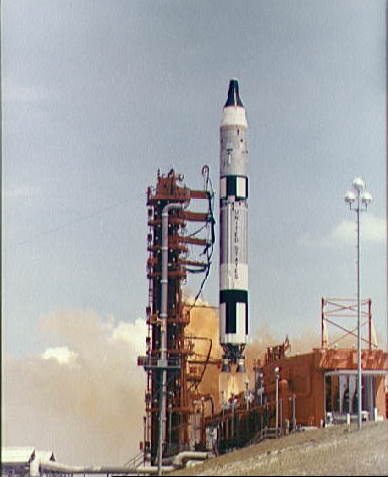Several notable launches on January 30th in years prior:
30 Years Ago (1979): The “Spacecraft Charging at High Altitude,” or SCATHA satellite, launched from the Eastern Space & Missile Center on a Delta rocket. SCATHA was the first spacecraft with a primary mission to study the space environment near the earth, “to obtain information about the processes and effects of spacecraft charging, a phenomenon known to have contributed to several on-orbit satellite failures.”
40 Years Ago (1969): ISIS-1, the International Satellite for Ionospheric Studies, launched from the Western Space & Missile Center. ISIS-1 was a Canadian-built satellite on a joint U.S./Canadian mission to monitor the Earth’s ionosphere.
45 Years Ago (1964): Ranger-6 launched from ESMC on its way to the Moon. As this NASA page explains,
On February 2, 1964, 65.5 hours after launch, Ranger 6 impacted the Moon on the eastern edge of Mare Tranquillitatis (Sea of Tranquility). The orientation of the spacecraft to the surface during descent was correct, but no video signal was received and no camera data obtained. A review board determined the most likely cause of failure was due to an arc-over in the TV power system when it inadvertently turned on for 67 seconds approximately 2 minutes after launch during the period of booster-engine separation.
That launch on January 30, 1964, was the second launch in as many days from ESMC. I think about those heady days, when on one day you had a test launch of a Saturn rocket and the next a launch of a small satellite as one of the pathfinders to the moon … and I weep that we have gone no further, and done no more.



 by
by 










